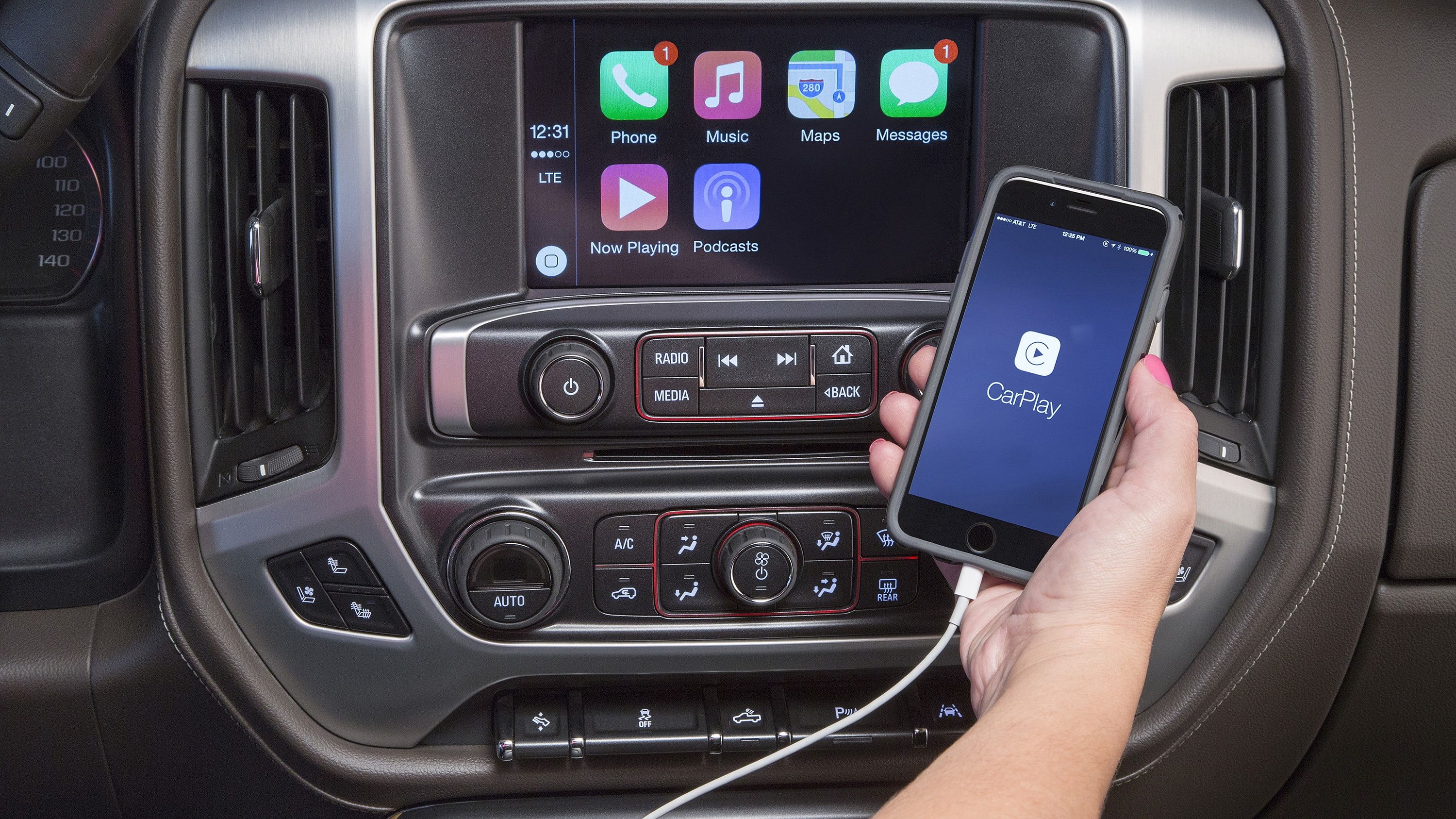GMC->ke32 has announced that Apple->ke2851 CarPlay will be offered in the Canyon,->ke1781 Yukon,->ke266 and Sierra->ke241 starting in the 2016 model year. Android users also share the news, though on at a lesser extent, as Android Auto will make its way into some Sierra models at first, with the Canyon and Yukon coming later in the model year.
Apple CarPlay essentially mirrors select applications from a user’s iPhone onto the vehicle’s infotainment system. This allows operation of the phone from both the touch screen and voice controls for a more connected yet safer experience.
CarPlay allows users to make calls, send and receive messages, listen to iTunes and third party music apps like Pandora, and use the iPhone’s Maps application – all without touching their iPhone. The CarPlay interface takes after Apple’s iOS graphic user interface with a clean, crisp, colorful display that is easy to read at a glance.
The Canyon, Yukon, and Sierra models with the eight-inch IntelliLink infotainment screen will get full use of CarPlay. The seven-inch screen in base model Sierras will also have the full range of CarPlay abilities. To activate, the user simply pushes a “Projection” button on the infotainment screen when an iPhone is connected to the system. Connection must be made via the iPhone connector though a USB port, however; Bluetooth does not support the transfer of CarPlay data.
What’s more, users can take advantage of GMC’s built-in 4G LTE Wi-Fi hotspot, saving cellular network data from accruing.
Continue reading for the full story.
Why it matters
As an iPhone user, Apple CarPlay answers my gripes with many infotainment systems’ clunky operating systems. GM’s->ke1024 various systems and FCA’s Uconnect aside, many infotainment systems simply lack an easy-to-use interface with logical menus.
Having CarPlay project my apps and maps onto a car’s infotainment screen saves the hassle of dealing with those clunky operating systems.
Having CarPlay and Android Auto catch on is not only good for the end user, but could potentially be good for automakers. If these phone-driven operating systems catch on with widespread usage, it could potentially mean automakers no longer need to supply software for their infotainment systems.
That eliminates costs on their part and supplies customers with a blank canvas for their device to project onto. People are usually loyal to a particular phone operating system and having their preferred OS display in their car should be a welcome reprieve from of the clunker automaker-supplied OS systems often found on the market.
2016 GMC Yukon
Read our full review here.

